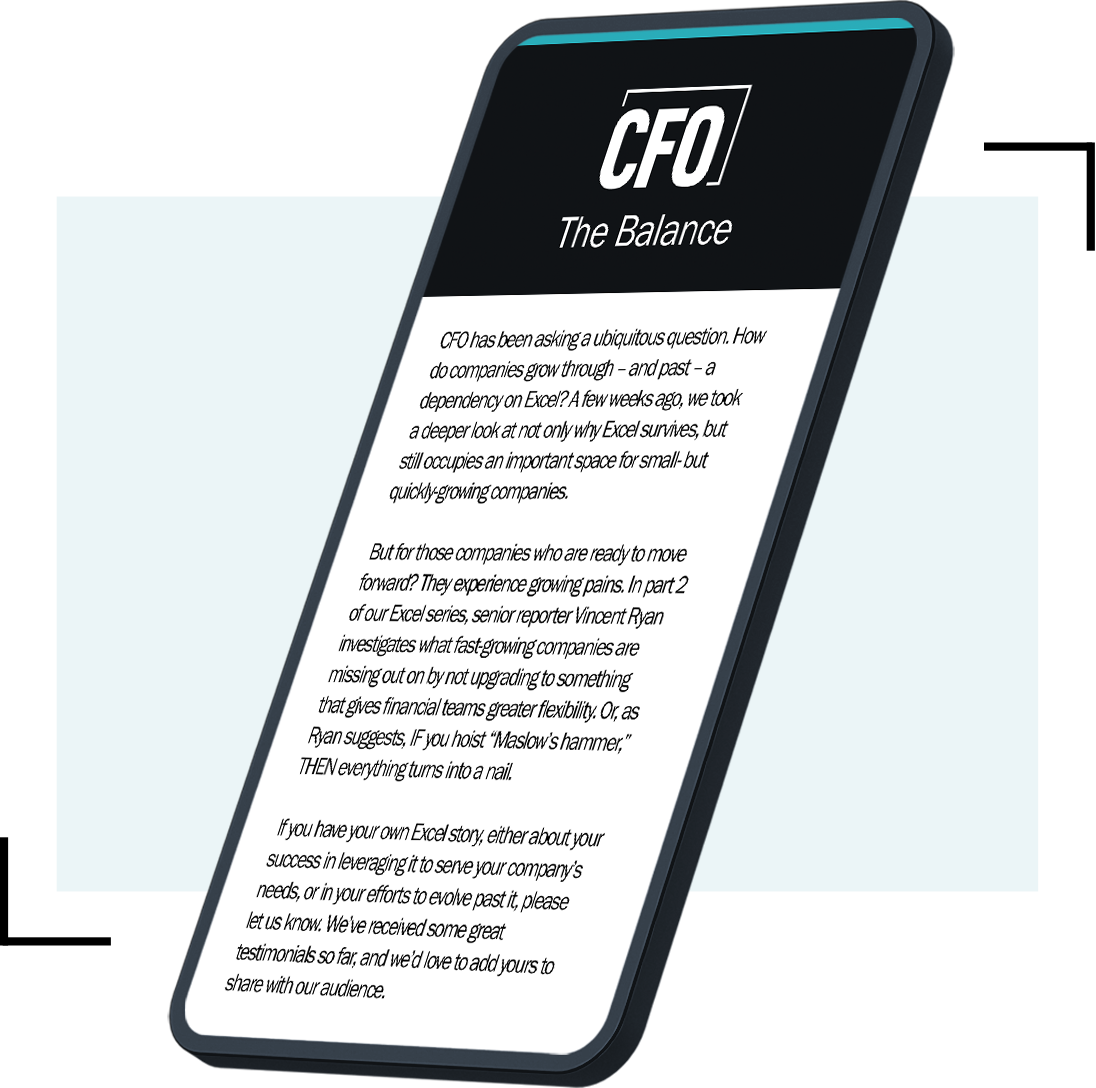Technology
-
26% of finance leaders expect a dramatic drop in GenAI hype: Poll
Finance leadership’s excitement around AI and its associated automation tools may be dwindling, data from The Daily Balance suggests.
By Adam Zaki • April 24, 2024 -
Sponsored by Motive
Embedded fleet spend management - a new era of profitability
Siloed management systems foster inefficiency and profit loss. Embedded finance offers an integrated solution, paving the way for enhanced profitability.
April 22, 2024 -
 Explore the Trendline➔
Explore the Trendline➔
 dem10 via Getty Images
dem10 via Getty Images Trendline
TrendlineThe CFO Strategy for Artificial Intelligence
Artificial intelligence’s impact on the office of the CFO continues to evolve, and finance chiefs must be aware of the opportunities it will create for growth.
By CFO staff -
73% of accounting firms not using AI: Report
Despite its trendiness, 35% of accountants said their organizations are not using AI and have no plans to do so.
By Adam Zaki • April 17, 2024 -
98% of Large Tech Execs Have Paused Internal GenAI Initiatives: Report
Many of the U.S.’ largest companies are pausing their efforts to implement GenAI products and tools, according to new data.
By Adam Zaki • April 3, 2024 -
Q&A
How AI Will Make CFOs’ Lives Easier: Tipalti CFO Sarah Spoja
“Massive technology changes are at the heart of AI. But how will people respond to those technology changes?” asks Spoja.
By Vincent Ryan • March 21, 2024 -
Former Intel CFO Stacy Smith Returns as Board Member
“Stacy’s expertise in finance and leading capital allocation strategies in the capital-intensive semiconductor industry will be additive to Intel’s board,” said Intel Chair Frank Yeary.
By Vincent Ryan • March 15, 2024 -
Companies Shine Spotlight on AI Ethics
Establishing clear guidelines is the most effective way to communicate with employees about AI ethics.
By David McCann • March 13, 2024 -
Sponsored by GoCardless
Why are we so afraid of payment innovation in America?
Across America today, CFOs are missing out on the opportunity to bring about a simple but effective payments revolution within their organizations.
By Lewis Turek, General Manager, North America, GoCardless • March 11, 2024 -
Q&A
May Mobility CFO: Leveraging Capital-Efficient Tech Development
“Companies in this space are losing billions of dollars per year trying to win this market,” said Brunelle. “We have a much smaller footprint.”
By Vincent Ryan • Feb. 20, 2024 -
67% of Companies Continue to Adopt AI Slowly: Report
AI’s best uses are still largely outside finance, with writing tasks and scheduling most frequently mentioned. However, automated data entry may be facilitating finance and accounting teams.
By Adam Zaki • Feb. 14, 2024 -
Finance Employee Defrauded for $25M by Deepfake CFO
The technology was used both to manipulate people's faces as well as voices, according to the Cyber Security and Technology and Crime Bureau in Hong Kong.
By Andy Burt • Feb. 5, 2024 -
42% of Mid-Market CFOs Expect Workloads to Increase in 2024
“They don't have the capability simply to address issues by adding another body to the mix. And their tech stacks are not optimal,” said Nick Araco Jr., CEO of The CFO Alliance.
By Vincent Ryan • Jan. 31, 2024 -
GenAI Use Largely Governed By the C-Suite
The biggest problem with GenAI right now is understanding “the art of the possible,” said David Wagner, director of research at Avasant.
By Vincent Ryan • Jan. 16, 2024 -
10 CFO Tech Stories to Save In Your Note-taking App
Artificial intelligence, automation, cybersecurity, data reliability, compliance — 2023 provided challenges aplenty for CFOs.
By Vincent Ryan • Dec. 26, 2023 -
Opinion
Want to Leverage the Power of AI? It Starts With a Solid Data Foundation
Harnessing the power of AI is reliant upon quality data at the ready.
By Katie Rooney • Dec. 19, 2023 -
Kroger, Marriott CFOs Deal with Digital Transformations
Digitally savvy competitors from the outside and pandemic disruption forced the companies to rethink and transform customer relationships.
By Vincent Ryan • Dec. 7, 2023 -
Most Finance Teams Still Don’t Use AI
CFOs have a key role to play in instilling a culture that accepts and takes advantage of AI capabilities.
By David McCann • Dec. 6, 2023 -
20% of Global CFOs Say Their Organizations Are Data-Driven
“Digitalization is stagnating in finance as a whole,” said Horváth’s Achim Wenning.
By Vincent Ryan • Nov. 29, 2023 -
CFOs Must Boost Their Cybersecurity Savvy, Former FBI Agent Says
CFOs must be able to ask probing questions of their chief information security officers and external cybersecurity professionals, says former FBI agent Pete Cordero.
By Vincent Ryan • Nov. 21, 2023 -
Demand for GenAI Skills Explodes in 2023
Job postings seeking skills in generative AI skyrocketed by 1,848% this year.
By David McCann • Nov. 20, 2023 -
Finance May Go Slower On Generative AI Adoption
Executives from PayPal and KPMG discuss why finance should be cautious when adopting generative AI tools.
By Vincent Ryan • Nov. 17, 2023 -
Opinion
6 Strategies for CFOs to Reduce Software Spend
CFOs must proactively identify and optimize SaaS overspending areas.
By Nidhi Jain • Nov. 14, 2023 -
61% of Finance Execs Not Using AI Yet: Weekly Stat
“Despite AI’s potential, most finance functions’ AI implementations have remained limited,” Gartner’s Marco Steecker said.
By Adam Zaki • Nov. 8, 2023 -
78% of C-Suite Says Their Organization Uses AI Today: Weekly Stat
Three out of 4 employees would be more accepting of or excited about AI if their company were more transparent about its plans to use the technology.
By Adam Zaki • Oct. 25, 2023 -
M&A Pros to Governments: Regulate AI
“AI is already reshaping various phases of the deal-making process.”
By David McCann • Oct. 23, 2023

























